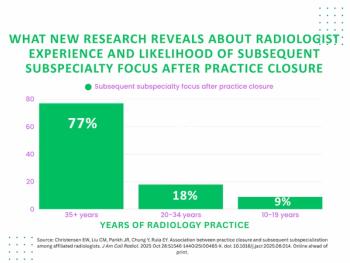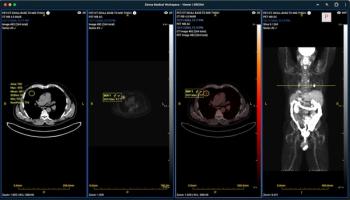
Standards Update: Poor PACS support in young markets forces ‘plug and play’ issue
Standards Update: Poor PACS support in young markets forces ‘plug and play’ issueBy Herman Oosterwijk, president, OTech Inc.Last month I attended the
Standards Update:
Poor PACS support in young markets forces plug and play issue
By
Last month I attended the CancunRad radiology conference in Cancun, Mexico (not a bad place to have such an event), and had the opportunity to gain insight into the status of imaging technology in Latin America. Based on the scientific posters and presentations at the conference, it seems as if the practice of medical specialties and availability of technology is on a par with the U.S. This is especially true of the private institutions, where the same equipment from the same vendors is being used. In fact, several of the posters at this conference could just as well have been at the RSNA meeting, and the show floor was filled with the same familiar vendors one finds at conferences in the U.S. and Europe, as well as specialized local dealers.
The one technology exception was PACS, which is far from achieving widespread implementation in Latin America. Unfortunately, many hospitals and providers in this region have had bad experiences with PACS, which has hurt expectations and made potential customers very cautious.
The technology is the same, so there can be only three other reasons for the perceived failure: support, support, and support. I have always wondered why medical imaging companies based in states such as Texas and California hesitate to send a support person to Mexico City but have no problem sending one to New York City, which is actually farther away.
Thus, when it comes to PACS, it is apparent that true plug and play is an absolute requirement, especially in countries where the engineers and technicians lack proper training and vendor support. At the same time, however, labor power in many of these locations is relatively inexpensive, and some hospitals are capable of doing their own system integration. And this is where standards come in. If there were no DICOM or HL7 to facilitate integration, there would be no connectivity and no solution. Therefore, especially in countries such as those in Latin America, standards are an absolute must, and plug and play is an imperative.
Fortunately, many PACS components are now available off the shelf and even in the public domain. One hospital in Mexico City spent less than $10,000 for a server and public domain viewers and is now able to do what a commercially available PACS can do but at a much lower upfront cost. Of course, this system needs more hand-holding and more people to support it, but in this instance people are more readily available than dollars for capital investment.
The thing we can learn in the U.S. from such examples is that it might not always take a sophisticated piece of software to do the job. Maybe that inexpensive Web browser (or, even better, free viewer) is the only thing a physician needs to look at an image. Pragmatic solutions, such as the University of California, Los Angeles, giving patients their images on a CD that also contains a freeware viewer, make a lot of sense. These inexpensive components continue to gain functionality and support. Who knows, maybe one day well see the Linux equivalent for PACS competing with the big Unix and NT guys.
Search Again Return To HNN Homepage
Newsletter
Stay at the forefront of radiology with the Diagnostic Imaging newsletter, delivering the latest news, clinical insights, and imaging advancements for today’s radiologists.






























